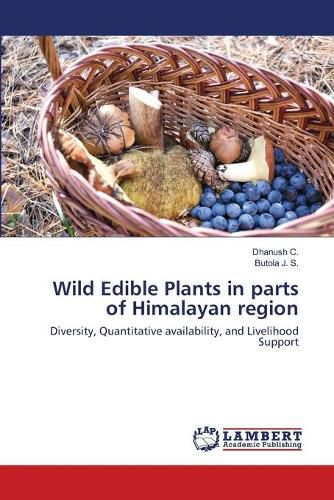Readings Newsletter
Become a Readings Member to make your shopping experience even easier.
Sign in or sign up for free!
You’re not far away from qualifying for FREE standard shipping within Australia
You’ve qualified for FREE standard shipping within Australia
The cart is loading…






This title is printed to order. This book may have been self-published. If so, we cannot guarantee the quality of the content. In the main most books will have gone through the editing process however some may not. We therefore suggest that you be aware of this before ordering this book. If in doubt check either the author or publisher’s details as we are unable to accept any returns unless they are faulty. Please contact us if you have any questions.
Natural resources with potential economic significance are crucial in maintaining the subsistence lifestyles of traditional mountain societies. The ability of given wild bioresources to continue meeting both subsistence and market needs however, largely depends upon sustainable harvesting and appropriate management practices for theirconservation. The wild edibles of the Himalayas need to be promoted as a horticultural crop and the farmers/local people need to be encouraged to develop/establish nurseries of these wild edibles. Efforts are required for value addition and create awareness about their high nutritive and medicinal value. The information on such plants may help to add variety to the monotonous diet so that requirements of minerals and vitamins etc. are easily met and help in publicizing the hitherto less known resources of wild fruits to many naturalists, visitors, tourists, mountaineers, researchers, and the local population. This book emphasizes mainly is wild edible plants in Part of Tehri Garhwal Region, UttarakhandHimalayas.
$9.00 standard shipping within Australia
FREE standard shipping within Australia for orders over $100.00
Express & International shipping calculated at checkout
This title is printed to order. This book may have been self-published. If so, we cannot guarantee the quality of the content. In the main most books will have gone through the editing process however some may not. We therefore suggest that you be aware of this before ordering this book. If in doubt check either the author or publisher’s details as we are unable to accept any returns unless they are faulty. Please contact us if you have any questions.
Natural resources with potential economic significance are crucial in maintaining the subsistence lifestyles of traditional mountain societies. The ability of given wild bioresources to continue meeting both subsistence and market needs however, largely depends upon sustainable harvesting and appropriate management practices for theirconservation. The wild edibles of the Himalayas need to be promoted as a horticultural crop and the farmers/local people need to be encouraged to develop/establish nurseries of these wild edibles. Efforts are required for value addition and create awareness about their high nutritive and medicinal value. The information on such plants may help to add variety to the monotonous diet so that requirements of minerals and vitamins etc. are easily met and help in publicizing the hitherto less known resources of wild fruits to many naturalists, visitors, tourists, mountaineers, researchers, and the local population. This book emphasizes mainly is wild edible plants in Part of Tehri Garhwal Region, UttarakhandHimalayas.